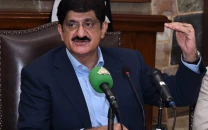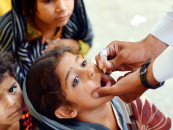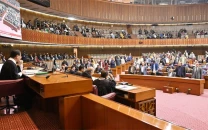Child bonded labour declines in Sindh: HWA
Landless farmers' body says reporting in media, social action and legal aid helped in rescuing bonded labourers
1617136344-0/Cover-(1)1617136344-0-640x480.webp)
Over a span of ten years, from 2013 to 2023, the Hari Welfare Association (HWA) has reported the release of 3,727 children, along with their adult family members, from the custody of landlords in Sindh.
HWA shared this information on the occasion of 'World Day Against Child Labour'.
These children make up 34 per cent of the total bonded labourers who were released into the agricultural industry. HWA collected this data.
The highest number of children were released in the years 2013 (651), 2019 (606), and 2020 (915).
According to Akram Khaskheli, President of the Hari Welfare Association, the number of children released in the agricultural sector hit a record low in 2022, with only 198 cases reported.
The primary reason for this decline in reporting bonded labour cases is the media's focus on rain and flood-related stories starting in August 2022.
Out of the children released in 2022, the majority (73) were from the Umerkot district.
In the brick kiln sector of Sindh, out of the total reported cases of released bonded labourers in 2022, 93 were children.
Khaskheli further revealed that Sindh has approximately 1.7 million bonded labourers, including over 700,000 children, working in unacceptable and inhuman conditions imposed by landlords in the agriculture sector.
Additionally, Sindh has 6.4 million out-of-school children, with a significant number engaged in child labour.
The statement raised concerns about the effectiveness and role of the District Vigilance Committees (DVCs) in addressing the issue of bonded labour.
Out of the 29 districts, DVCs were formed in only 19, but they were not reported to be involved in the release and rehabilitation of bonded labourers through court orders.
In all instances, the police raided landowners' properties and brick kilns, presenting the family members of peasants and brick kiln workers before the courts.
However, the landlords were not arrested, and no charges were filed against them under the Sindh Bonded Labor System (Abolition) Act 2015.
This lack of enforcement and accountability highlights the exploitation of peasants by landlords.
HWA claimed that child labour increased following the floods in August 2022.
However, the Sindh Resettlement and Rehabilitation Policy (2022) implemented by the government of Sindh falls short of adequately addressing the needs and rights of children, particularly those engaged in agricultural activities under harsh working conditions in rural areas.
The statement also pointed out that while Sindh has introduced laws to minimise child labour and reduce the number of out-of-school children, the implementation has been highly ineffective.
Laws such as the Sindh Tenancy Act of 1950, the Sindh Child Protection Authority Act of 2011, the Sindh Right of Children to Free and Compulsory Education Act of 2013, the Sindh Bonded Labor System Abolition Act of 2015, and the Sindh Prohibition of Employment of Children Act of 2017 offer significant protection to children.
However, their enforcement has remained a distant dream as children continue to be engaged in the worst forms of child labour.
Khaskheli expressed disappointment with the Sindh Child Protection Authority, responsible for safeguarding the rights and welfare of children, for its failure to protect them from the prevalent worst forms of child labour in factories and mechanic shops across the province.
He emphasised that child labour not only violates international conventions and domestic legislation but also hinders the socioeconomic progress of the region.
Khaskheli urged the Sindh Child Protection Authority to actively address this issue, protect the rights of vulnerable children, and collaborate with relevant stakeholders to eradicate the worst forms of child labour in Sindh.
HWA emphasised the importance of implementing laws and addressing the issue of bonded labour in the agriculture, brick kiln, and other sectors of the economy in Sindh.
To achieve this, a strong will and commitment from the Government of Sindh are necessary.



















COMMENTS
Comments are moderated and generally will be posted if they are on-topic and not abusive.
For more information, please see our Comments FAQ